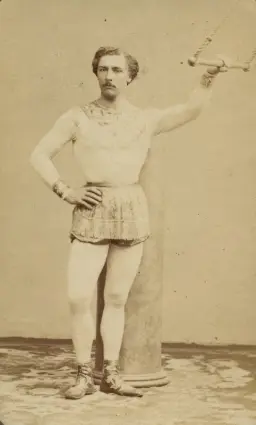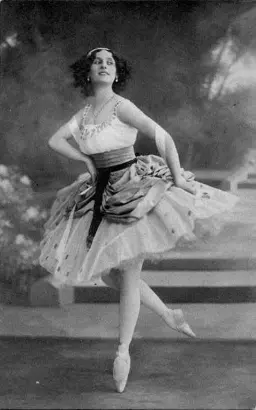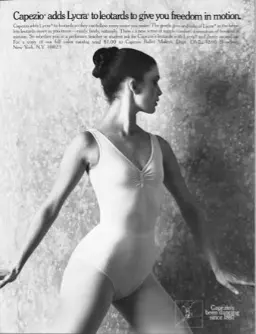Dance, an art form as old as humanity itself, has always been a reflection of our times. Dance wear has evolved alongside us, changing styles, technologies, and societal trends. In this journey through time, we'll explore how iconic brands have shaped the landscape of dance wear, and how these evolving trends have impacted dancers' performances and expressions. As Salvatore Capezio, founder of Capezio, once said, "Every dancer should have the best shoes for their feet." This dedication to quality and performance has been the driving force behind many dance wear company’s evolution. So, lace up your dance shoes, and let's step through the decades!
 The 18th Century
The 18th Century
The Classical Era
Dancers in the 17th century typically performed in heeled shoes. The costumes were heavy and resembled elaborate court ensembles. Dancers wore leather masks that concealed all facial expressions The masks were made to portray comedy or tragedy, depending on the character. Masks were the norm for all actors on stage. Toward the end of the century, dance costumes became less ornate and more functional, including the invention of tights in 1790.
 The 19th Century
The 19th Century
Romanticism
During the “Century of the Waltz,” dance costumes underwent a number of changes brought on by famous dancers of the time. French ballerina Marie Camargo shortened skirts to calf-height and traded heeled shoes for soft leather slippers before toe boxes were added for pointe work around 1820. French ballerina Marie Sallé took the stage in a simple, light tunic dress without a mask, and closer-fitting bloomers and pants were introduced throughout Europe to showcase the mastery of intricate dance steps.

By early 1900’s, dance costumes looked less like traditional party suits, transitioning instead to a lighter style that more closely resembled Grecian robes. Isadora Duncan danced in bare feet with only minimalist dress style, composed of a tunic or a semi-transparent veil and modern dance style was popularized.
 The Early 20th Century
The Early 20th Century
Birth of Modern Dance Wear
In the 1920s and 1930s, as ballet gained popularity in the United States, modern dance wear began to take shape. Leotards, initially designed to be worn by male circus performers, designed by Jules Léotard, were introduced to dancers for their fit. This allowed the dancer the ability for more freedom of movement. Dancers experimented and created their own styles of clothing.
Legendary dancers like Anna Pavlova influenced more than just dance technique. She changed the shoes and attire worn by dancers on stage. It was during this era that Capezio, (established 1887, New York, US) became synonymous with high-quality ballet shoes. Freed of London (1929, UK) and Bloch (1932, Australia) brands were also born.
 Mid 20th Century
Mid 20th Century
Expansion and Innovation
Post-war America saw the rise of jazz and tap dance, bringing variety to dance wear. The rise in the movie industry required visually pleasing costumes for films. Finally, specialized shoes for each new dance style emerged. Businesses of dance attire along with influencers lead the way in innovation. Estelle Sommers, owner of the Capezio Fashion Shop in New York City from 1964 to 1975, introduced Antron-Lycra/Spandex into Capezio's dancewear.
The 1960s and 70s brought the emergence of contemporary dance styles. As Martha Graham, a pioneer of modern dance, famously said, "The body says what words cannot." This philosophy drove the development of dance wear that allowed for greater freedom of movement and expression.
Late 20th Century
Dance Wear Meets Fashion
The aerobics craze heavily influenced dance wear, introducing bright colors, leg warmers, and off-the-shoulder tops. Brands adapted to these trends, creating dance wear that doubled as streetwear. Energetiks emerged and led the way in 1988 to give dancers high performance dance wear, focusing on functional fabrics and styles. The hip-hop culture influenced new styles in dance wear, with baggy pants and sneakers.
Many of the top known brands entered the scene during the 1980’s-90’s including: Wear Moi, So Danca, Gaynor Minden, Nikolay (Grishko), Sansha, Russian Pointe, R-Class, and more.
Current Trends:
Versatility and Performance 
In recent decades, we've seen a focus on high-performance fabrics, moisture-wicking technology, and ergonomic designs. Many companies have embraced these advancements, creating dance wear that enhances performance while maintaining style. As the founders of Energetiks state, "Our vision is to inspire and support dancers of all ages and abilities." This commitment to inclusivity and performance is shaping the future of dance wear. Sustainability has also become a key focus, with brands adopting eco-friendly practices.

From the classic elegance of early 20th-century ballet to the high-tech, sustainable dance wear of today, the evolution of dance attire reflects our changing world. As Christian Dior said, "Elegance must be the right combination of distinction, naturalness, care, and simplicity." This philosophy perfectly encapsulates the journey of dance wear through the decades.
Whether you're a seasoned performer or just starting your dance journey, August Muse is here to help you find the perfect dance wear to express your art. Visit us to explore our collection of brands - both classic and innovative - and discover how the right dance wear can elevate your performance and passion for dance. Isadora Duncan said, "I use my body as my instrument, like a musician uses a piano or violin." Let your dance wear be the perfect accompaniment to your beautiful music.